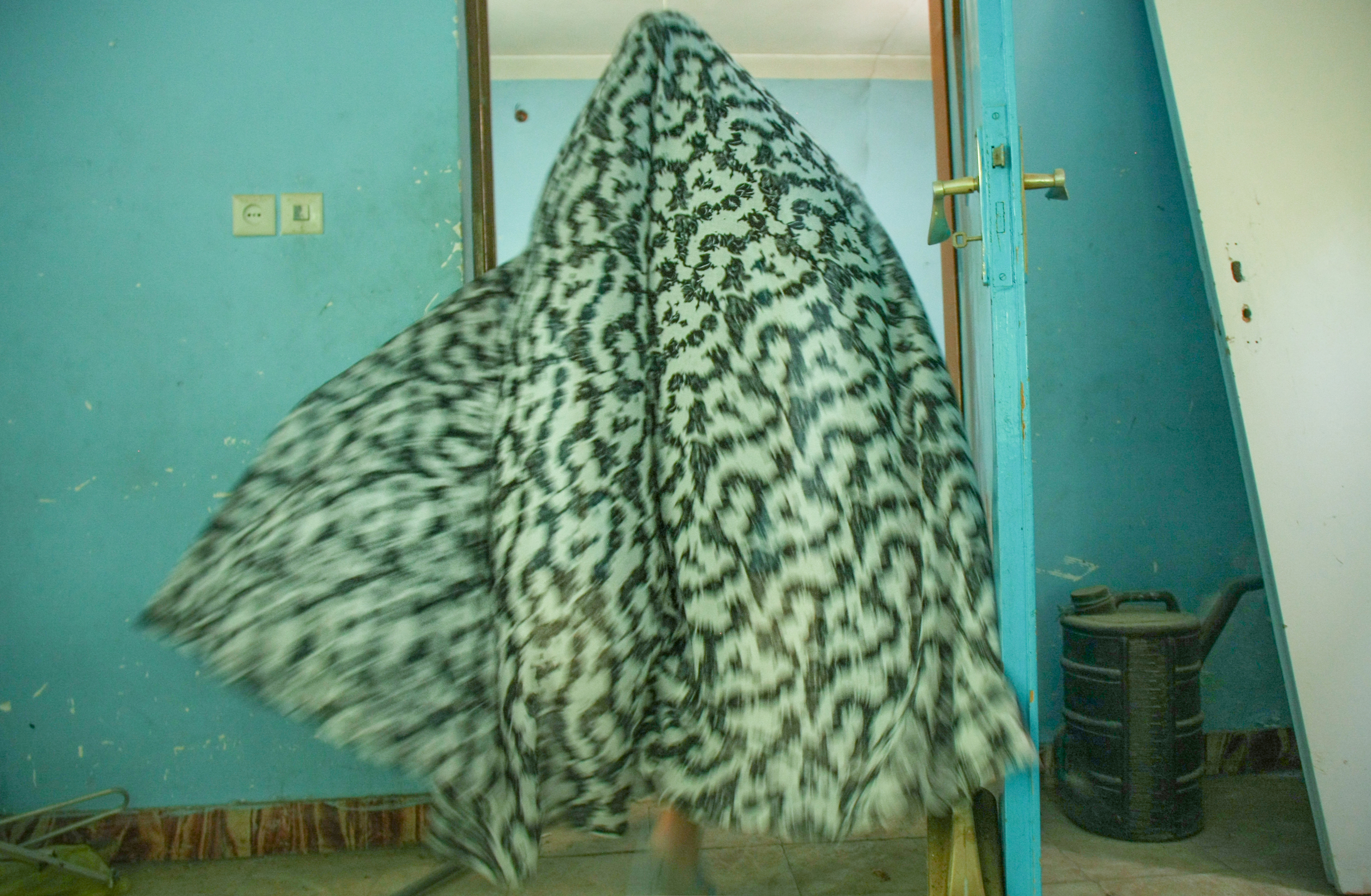“There are countries that are still dominated by traditional and fanatical patriarchal views,” states Ershad Fatahian about what inspired him to make his series of images titled Unseen. Photographed entirely in his home country, Iran, he hopes to bring about an awareness of the struggles women face with this set of photos.
You can view this article and much more with minimal ads in our brand new app for iOS, iPadOS, and Android.
Without making any obvious political references, Ershad Fatahian’s Unseen creates a reasonably bold statement about the imbalanced rights of women everywhere. Despite strides in the right direction to improve this, he maintains there is a strong need for quick betterment of the situation. Using carefully selected locations not far from his town, he’s portrayed his thoughts about the current issues women face worldwide.
The Essential Photo Gear Used by Ershad Fatahian
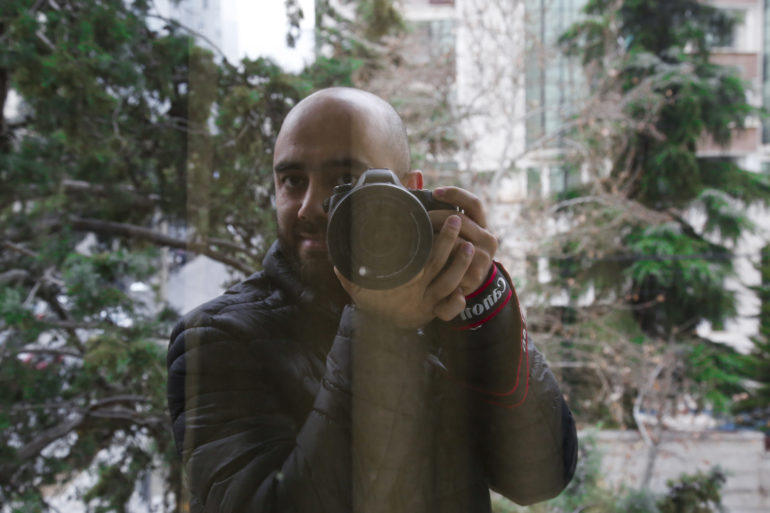
Ershad told us:
- Canon 5D Mark ll
- Canon 6D
- Sony Cybershot DSC-F828
- Canon 40D
- Canon 30D
- Manfrotto Befree GT XPRO Tripod
- Sandisk memory cards
I believe that it’s not about the camera, it’s about the camera man. For this reason, I usually do not feel the need to change the camera as technology advances and new models come on the market, and I can almost say that I have been working with each camera for 4 or 5 years.
The Phoblographer: Please tell us about yourself and how you got into photography.
Ershad Fatahian: It all started like this: with the encouragement of a friend, I sent my photos for the first time to participate in the 8th Iranian Photography Biennale, the result was interesting! I came first in the field of architecture in 2006. I had entered a new world; now it was time for new experiences in this world. I am Ershad Fatahian, born in 1982 in Tehran, a graduate of painting from the University of Art and Architecture in Tehran.
I started my career in photography and graphic design in 2006. I have participated in three international Photo exhibitions in Germany, Italy, Poland, Spain and 15 domestic exhibitions. I have been working as an art director since 2011 in my advertising studio called Deep Creative Solution.
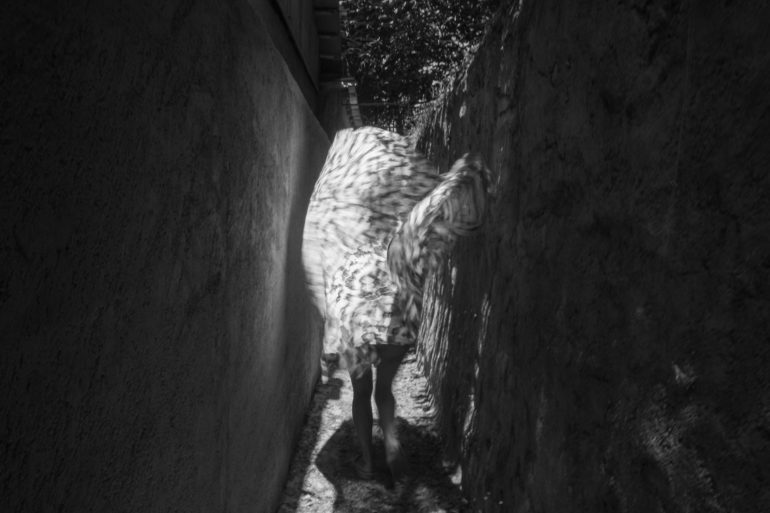
The Phoblographer: In your opinion, what is this series expressing to the viewer?
Ershad Fatahian: In the Middle East and some other parts of the world, women are mixed with the pattern of tradition and religion and in some countries are discriminated against. And the identity of women in general in the world, during some periods of history, even in developed countries, has not been accepted independently and freely. But there are countries that are still dominated by traditional and fanatical patriarchal views. Of course, over time, this view has changed a lot in many countries, as we see powerful women with important, influential jobs even in the decision-making position for a country. But there are countries that are still dominated by traditional and fanatical patriarchal views.
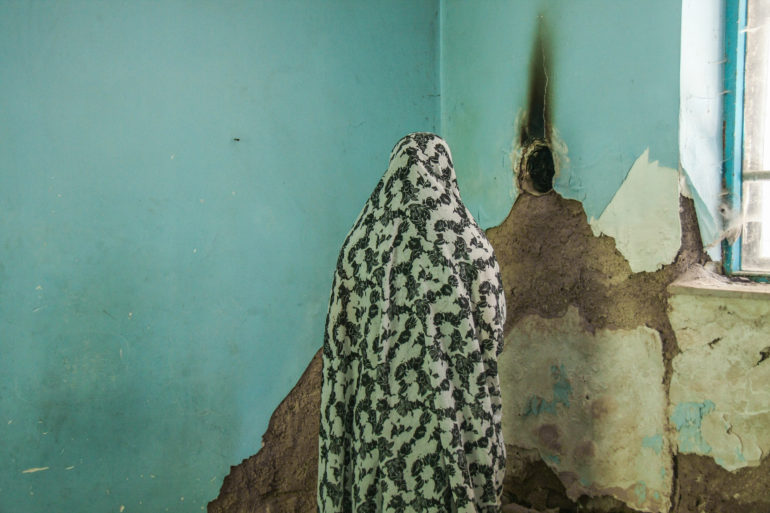
The subject of the collection I portrayed is women in such lands who have always been shrouded in traditional and patriarchal fanatics and have not been able to show their potential, ability and talent, but still, always look to the future and hope, And try to change their situation. I have tried to capture the naked reality of the thoughts in which women in some countries are imprisoned by removing the filter of optimism and beauty of the image.
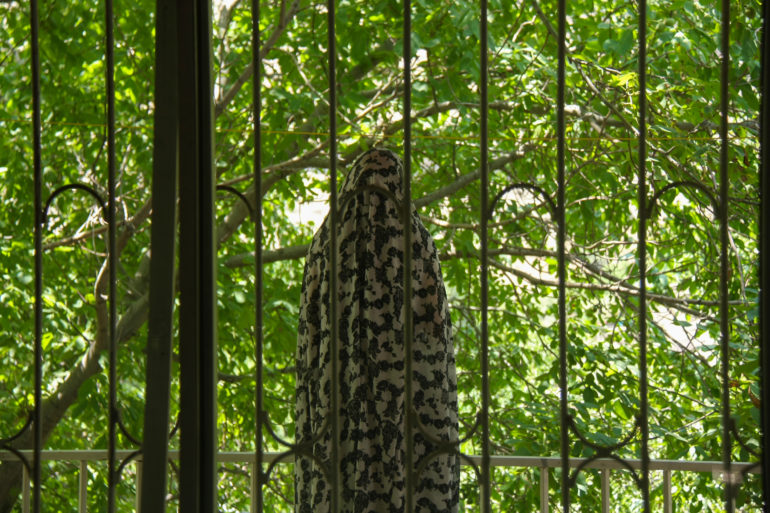
The Phoblographer: How easy was it to photograph this series? What challenges did you encounter?
Ershad Fatahian: To find such spaces, I enlisted the help of my friends so that with their help, we could find the most suitable space for photography. Or, where appropriate, the owner would not have allowed us to do so. So we decided to explore the gardens outside the city as well, the gardens that have an old building, and fortunately, after two weeks of research, we found the right space when we were looking for it.
About 60 km outside of Tehran, there is a pleasant and cold area with many gardens, considering that the interior of the building, which had been abandoned for about 20 years, had good conditions for this project. Some equipment has remained there ever since. After examining the equipment in the space, an idea came to my mind. I decided to use the same equipment without changing or relocating, or adding new elements. Dirty, messy, rotten walls, broken bathroom, everything was great to start.
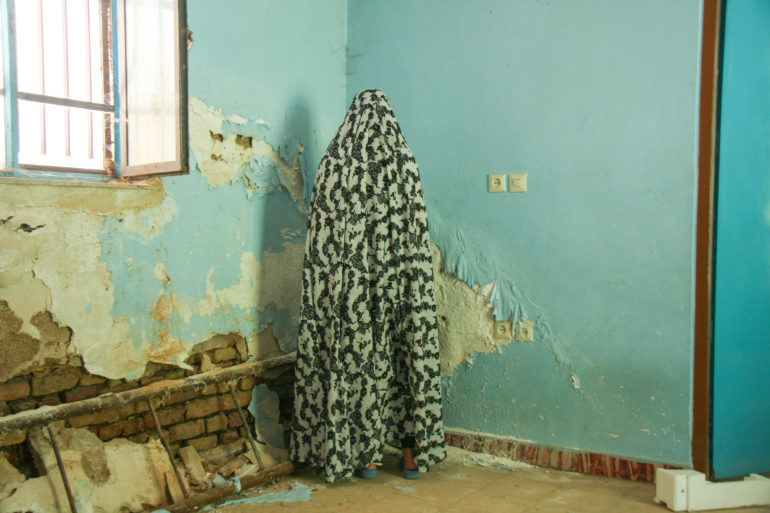
The Phoblographer: Iran is rich in cultural history. Is this series only about the struggles women face there?
Ershad Fatahian: As you mentioned, Iran has a rich and great culture and also has different ethnicities and languages. Women in Iran during the last 40-50 years have experienced great progress in the field of civics and presence in society. However even in there are also some regions in Iran that are more traditional and more committed to traditional behavior and thoughts. But this collection is not specifically about Iran, and as I said before, such cases can be seen in many parts of the world. I can say that this collection reflects the situation of women in many parts of the world.
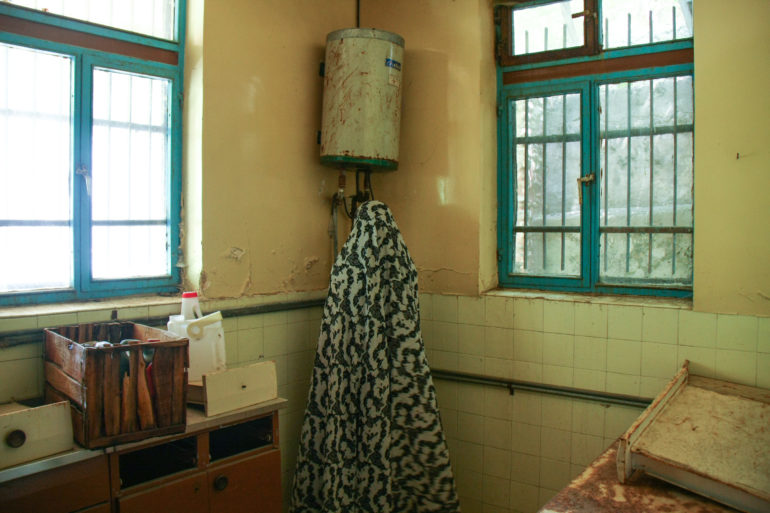
The Phoblographer: Tell us about the significant of choosing a location on the outskirts for this project.
Ershad Fatahian: The display of rotten prejudices and ideas and the traditional approach, which was not accompanied by the civil progress of human societies in the world, required a special place where the constituent elements could each express meaning, such as rotten walls, abandoned kitchen, window guards in this collection, each metaphorical. The cold and soulless atmosphere of the place where this project took place, in my opinion, was quite suitable for conveying the concept that was in my mind.
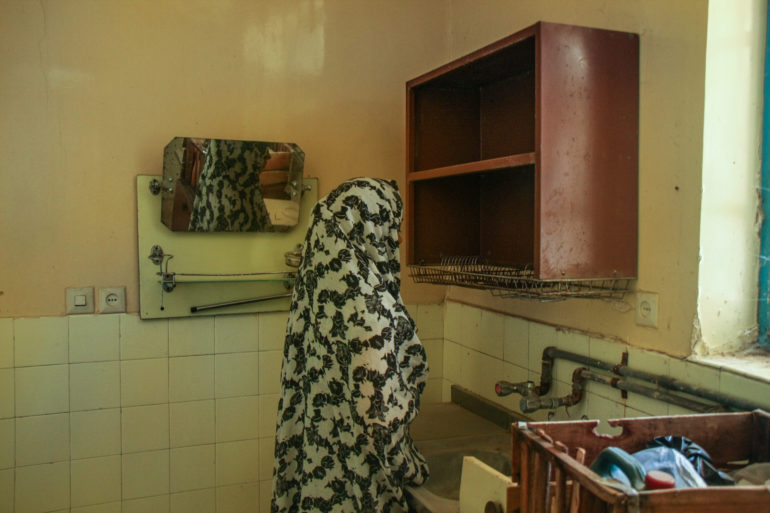
The Phoblographer: What does the blur of the fabric she’s wearing signify?
Ershad Fatahian: The fabric you see on the woman’s head in the photos is apparently a symbol of hijab and covering, but as I said, I was looking for the metaphorical meaning of the elements in the image, so I meant more than just a covering, and it can be traditional beliefs. It was because I wanted to show that the person under this cover or Traditional beliefs have made this conscious choice to adapt the external situation to her inner nature, which she has preferred. Within the limits that exist, she can maintain her life expectancy and not give up.
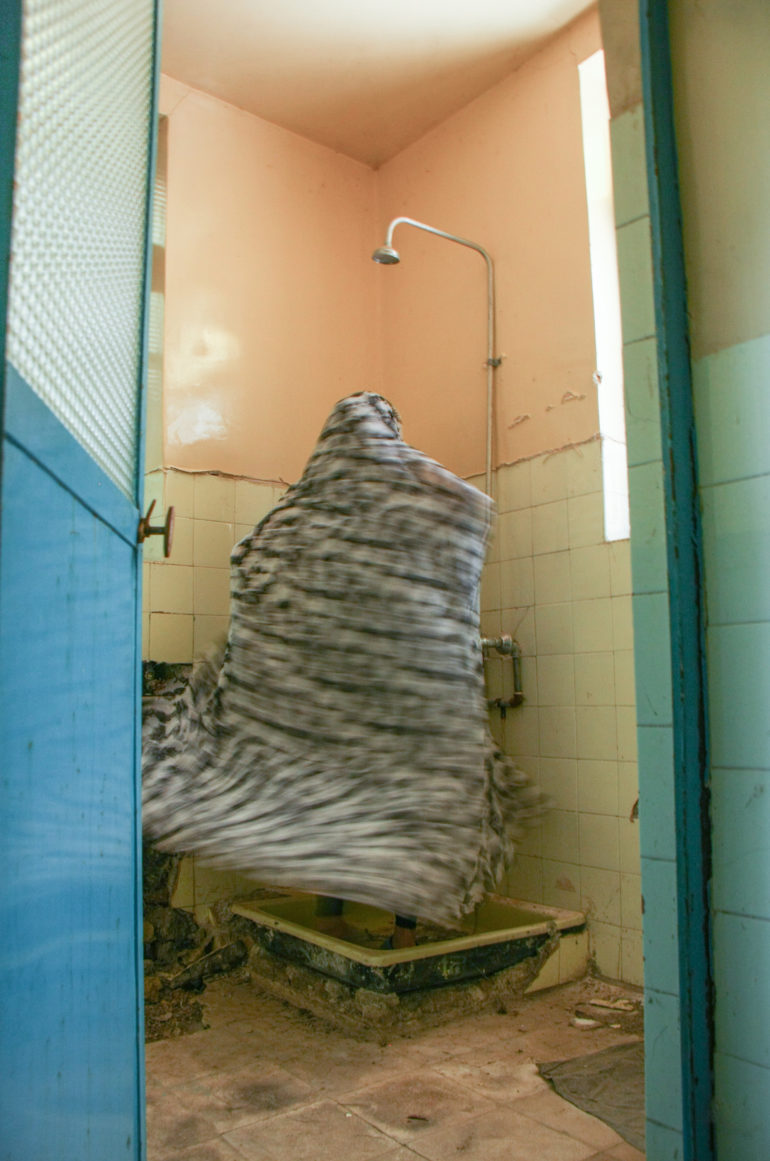
The Phoblographer: Which image sums up the project as a whole? Tell us why.
Ershad Fatahian: In my opinion, this photo has all the words I wanted to say. This photo has movement, moving forward, or perhaps some kind of escape, an escape to a destination that looks like a room from which she is already in but may lead to an exit. In this photo, there is hope, the locked door is opened, and the person is leaving quickly.
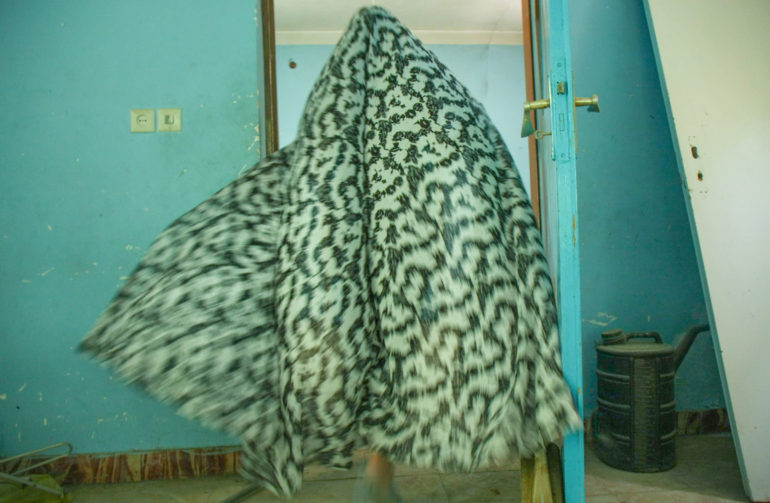
The Phoblographer: What has the response to this series been? Do you have any plans for something similar?
Ershad Fatahian: There are many who, in my opinion, being more professional viewers, to a large extent, were able to understand what the photos wanted to convey. On the whole, the art of a photographer or artist becomes more valuable when there are words to say behind the outer face of his work. Naturally, the general public will not have such perceptions at first sight, and my audience has not been such people.
The perception of some was superficial as far as seeing a woman’s uncomfortable situation, her frustration of being in confusing and closed spaces, but when they realized the hidden meaning behind each photo and figure and element, it was very interesting for them and made them again look at and interpret the photos more carefully.
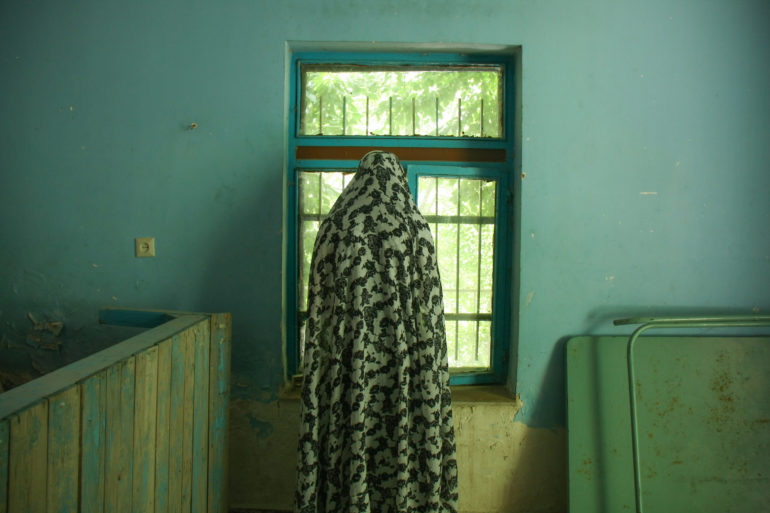
The Phoblographer: What would you like to tell our readers about the photography scene in Iran?
Ershad Fatahian: The fact that Iran has a very rich and unique cultural identity in the world shows in itself the great potential that we have in Iran for foreign visitors. The deeper you go, and the more you read about its historical periods and its people, the more you will be attracted to it. There is almost no city in Iran that does not have historical monuments. My personal interest and my next project is to try to depict another concept using historical sites.
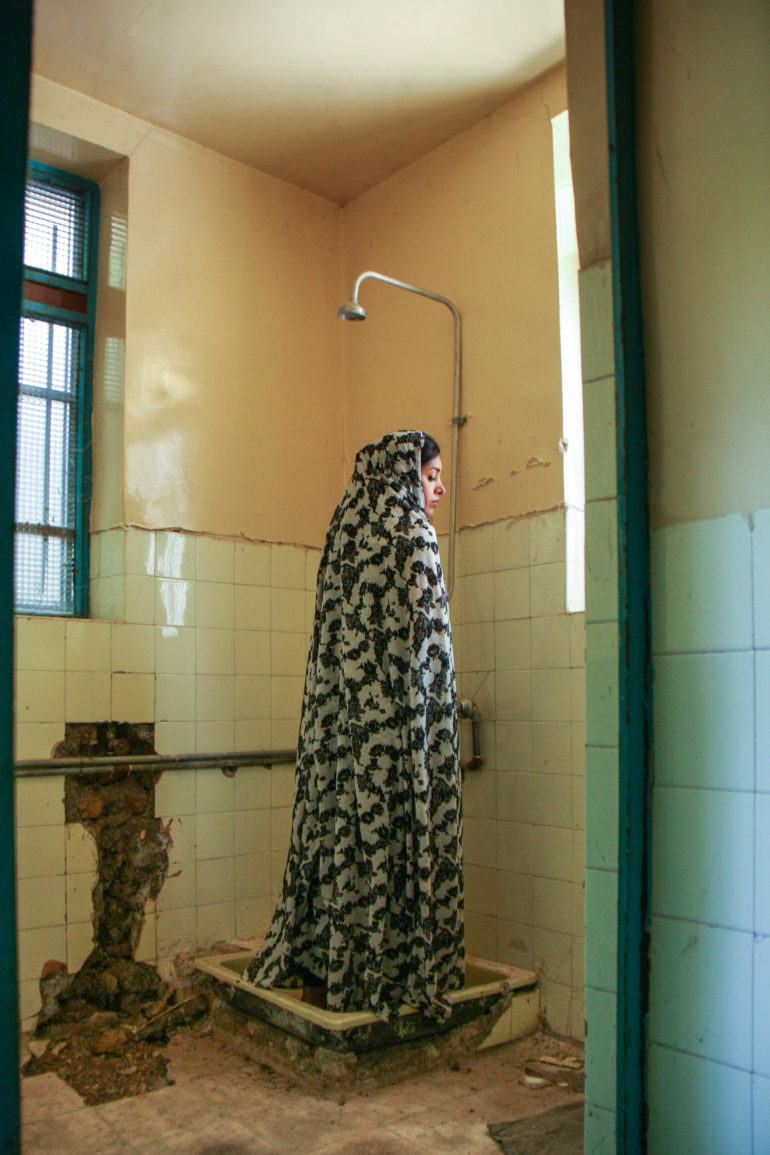
All images by Ershad Fatahian. Used with permission. Please visit his Twitter, Instagram and LinkedIn pages to see more of his work.
Want to get your work featured? Here’s how to do it!


